Emancipating the Past: Kara Walker’s Tales of Slavery and Power at the Crocker
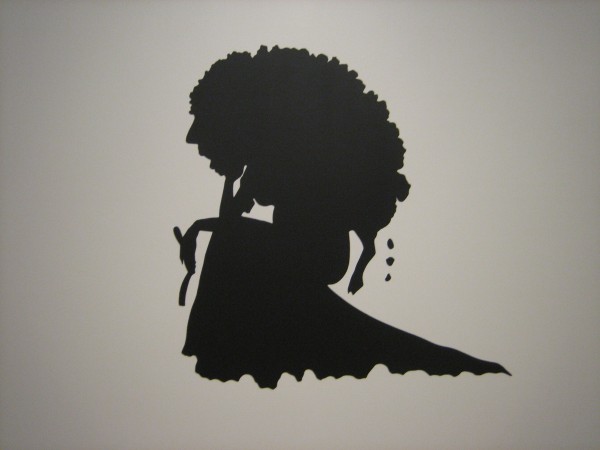
Artist Kara Walker’s deftly cut paper silhouettes are used to explain her narrative in a poignant show, “Emancipating the Past: Kara Walker’s Tales of Slavery and Power,” currently on view at the Crocker Art Museum in Sacramento. As one approaches the third floor gallery and takes a first glance, the artwork, just for a second, looks cartoonish: silhouettes of young girls running after chickens; white swans floating on an imaginary pond; and a man and boy walking on air. However, the closer you get you realize these powerful pieces are far from cartoonish. In fact, they are representative of a painful but truthful history of the antebellum south. Lean in and you will observe Walker’s presentation of cruelty and horror.
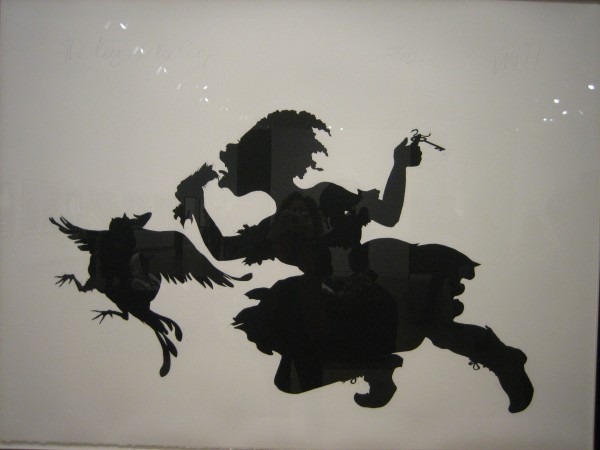
Kara Walker, “The Keys to the Coop,” lino cut on paper, 1997, collection of Jordan D. Schnitzer. According to the Crocker, “Caught mid-run in her pursuit of the headless chicken, this raggedly dressed girl dangles keys from one hand and a holds the bird’s missing head in the other. Various racial associations are captured here – not excluding the lore of voodoo ritual – but Walker also creates a sense of empowering rebellion.
Walker’s history of plantation life under slavery is sharply interpreted here in wall paintings, works on paper, and new media. Her underlying theme of power, and the attempts to steal power, are depicted in graphic scenes filled with violence and brutality. Challenging the status quo through an intense tableau, Walker’s art references the struggles for equality, race relations and history. Most notable is her use of the silhouette, a popular civil war era art form.

Kara Walker, “The Emancipation Approximation,” screenprints on paper, 1999-2000, collection of Jordan D. Schnitzer. According to the Crocker, “In this grand cycle, 26 prints read from left to right.”
Walker was recently the featured speaker in the Crocker Art Museum’s ongoing series, Icons in Conversation. She told the sold out audience that 19th century genre paintings were an early inspiration and that she made cutouts as an art form to reject paintings. Explained Walker, “Silhouette is important to me because it’s marginalized, and feminized, and not considered fine art.” She also told the audience, “I’ve always been interested in the melodramatic and in outrageous gestures.” That certainly explains many of the works on display in the current exhibition.
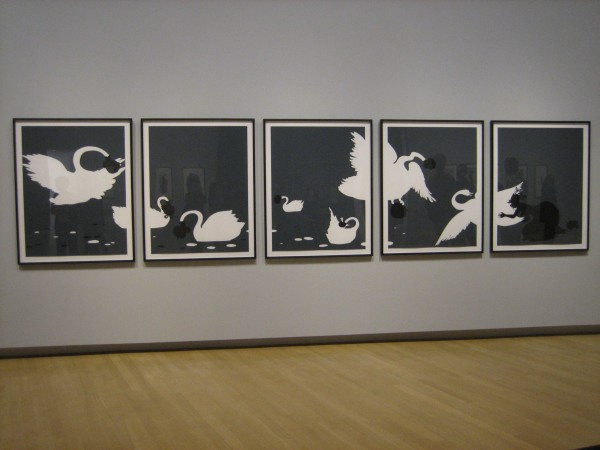
Kara Walker, “The Emancipation Approximation,” screenprints on paper, 1999-2000, collection of Jordan D. Schnitzer. According to the Crocker Art Museum, “In this grand cycle, 26 prints read from left to right. The recurring swan motif Walker uses has a long tradition rooted in Renaissance depictions of Leda and the Swan. Using the whiteness of the swan to signify race, Walker creates a new metaphor for rape and other forms of submission all too common to plantation life.”
A move to Stone Mountain, GA at age 13, in 1982, with her family from Stockton, CA, made a serious impact on Walker’s life as an artist (Her father, artist Larry Walker, was hired by Georgia State University.). While living there she came face to face with the realities of racial politics and racial history. Walker describes Stone Mountain as, “a haven for the KKK.”
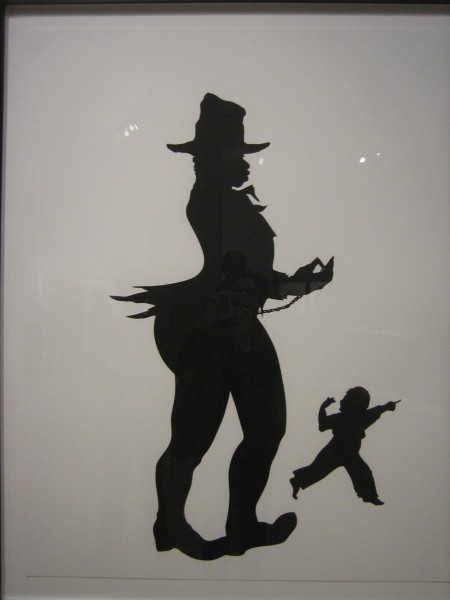
Kara Walker, “The Emancipation Approximation,” screenprints, 1999-2000, collection of Jordan D. Schnitzer. One of 26 prints in the grand cycle.
After earning art degrees from the Atlanta College of Art and the Rhode Island School of Design, Walker was included in the 1997 Biennial exhibition at the Whitney Museum of American Art in New York. She received a John D. and Catherine T. MacArthur Foundation’s “Genius” grant when she was only 27, the youngest person to do so. A professor of visual arts in the MFA program at Columbia University, Walker resides in New York. Her work is widely exhibited.
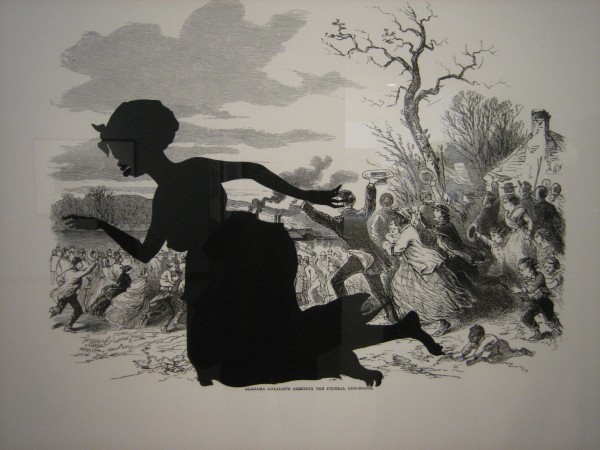
Kara Walker, “Harper’s Pictorial History of the Civil War (Annotated): Alabama Loyalists Greeting the Federal Gun Boats,” offset lithography and screenprint on paper, 2005, collection of Jordan D. Schnitzer.
When asked what she’s currently working on, Walker hinted at a large public project scheduled for next May in New York. The current Crocker exhibit features sixty works from the Jordan Schnitzer Family Foundation, and is on view until January 5, 2014.


